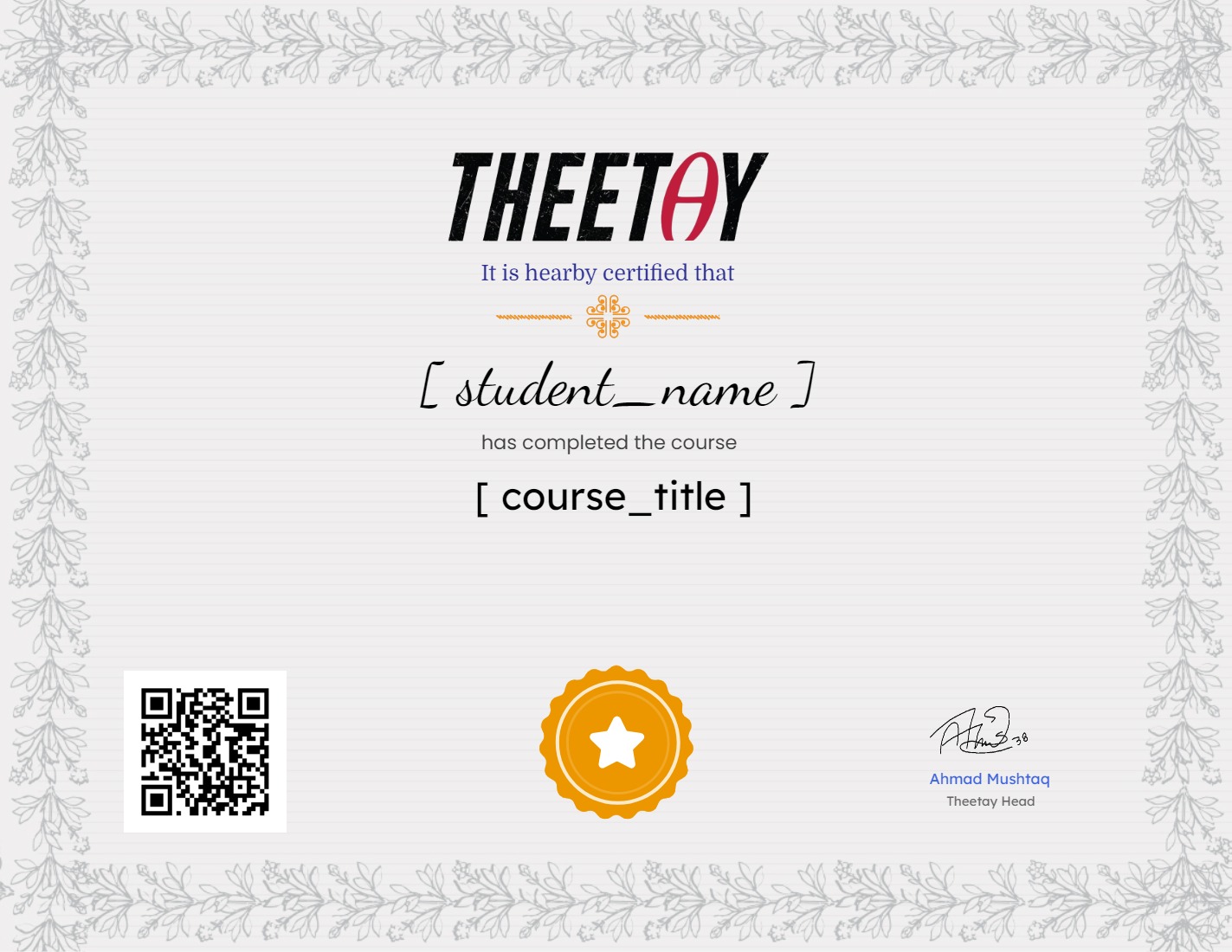(Udemy) Build a Tower Defence Game with Unity and Blender (Penny de Byl)

About Course
Learn how to build a Tower Defence game from scratch with Unity and Blender. This free online course from Udemy will teach you the skills you need to be an independent game developer. This course covers everything from game mechanics and coding in C# to 3D art asset creation in Blender.
In this course, you will learn:
- Pathfinding
- Character Animation
- User Interface Development and Programming
- Economy systems including player lives, and money accumulation & spending
- Special effects including sound effects, particle systems, and explosions
- Automated enemy-sensing towers
- Blender
- Modular 3D art assets for game level design
- Procedurally Generated Textures
- A multipart game character with sub-meshes that can be independently controlled with code in Unity
This course is taught by experienced game developers Penny de Byl and Mike, who have over 40 years of combined experience with Unity and Blender. This course is broken down into two parts that can be taken separately or together.
This free course is available on Theetay, your one-stop shop for free online courses from platforms like Udemy, Udacity, Coursera, MasterClass, NearPeer, and more.
What Will You Learn?
- Work with pathfinding to create autonomous characters that navigate a 3D environment.
- Translate Tower Defence Game Mechanics into C# Code in Unity
- Use Blender to create modular 3D game objects for use in level design
- Design and develop moveable 3D models that can be programmatically moved with C# code in Unity
Course Content
Introduction
-
A Message from the Professor
-
– Introduction
04:06 -
– Join the H3D Social Community
01:26 -
– Tower Defence Game Mechanics
05:49 -
Course Material Download Link
00:00
Part A02 Building A Tower Defence World
-
– A Quick Introduction to Navigation Meshes
11:06 -
– Creating a Navmesh Agent
14:49 -
– Spawning Agents
12:31 -
– Timing and Limits
15:10
Part A03 Developing Tower Placement Mechanics
-
– Programming Turret Drop Functionality
10:33 -
– Programming Turret Drag Functionality
11:25 -
– Controlling Turret Placement
08:32 -
– Tweaking for Turret Models
10:57
Part A04 Creating a User Interface
-
– Adding Buttons to Select Turret Type
09:19 -
– Instantiating a Turret from a Button
11:06 -
– Developing a Turret Upgrade Menu
09:25 -
– Activating and Closing the Upgrade Menu
11:24 -
– Challenge Add a new type of turret
07:14
Part A05 Tower Defence Artificial Intelligences
-
– Aiming at the Enemies
09:43 -
– Tower Horizontal Targeting
05:57 -
– Tower Vertical Targeting
10:00 -
– Resetting Turrets to Original Positions
04:36
Part A06 Building Destructible Enemies
-
– Using Scriptable Objects to Hold Enemy Data
10:18 -
– Displaying a Healthbar
11:23 -
– Reducing Enemy Health
12:50 -
– Improving Shooting Accuracy
07:38
Part A07 Customising with Scriptable Objects
-
– Customising Turret Properties
09:28 -
– Programming with Turret Properties
09:26 -
– Defining Individual Turret Types
16:05 -
– Defining Individual Creep Types
13:41 -
– Manually Working with Colliders
05:43
Part A08 Sounds and Visual Effects
-
– Building the Environment
11:02 -
– Placing Platforms
10:45 -
– Finessing Shooting Sounds
09:39 -
– Particle System Flames
13:31 -
– Switching Particle Systems on and off
06:05 -
– Adding Shooting Effects for TwoGun Towers
14:30 -
– Enemy Death Explosions Part 1
11:43 -
– Enemy Death Explosions Part 2
13:38 -
– Enemy Death Explosions Part 3
06:07
Part A09 Tower Defence Game Mechanics
-
– Waves Part 1
10:25 -
– Waves Part 2
07:03 -
– UI Layout for Game Information
10:13 -
– Displaying Wave Counts
06:42 -
– Making Money
10:22 -
– Counting Lives
07:46 -
– Changing the Game Timescale
10:35 -
– Spending Money on Towers
13:54 -
– Upgrading and Removing Towers
15:24 -
– Game Over
12:32
Part 2 B02 Orentation
-
– Project Overview
02:14 -
– Reference Material
02:33 -
– Our Workflow
01:45 -
– Multiple Approaches
02:25 -
– Are You Stuck
04:41 -
– Share Your Work
02:21 -
– Course Resources
01:37 -
– Help I Have Made a Complete Mess
02:27
Part B03 New To Blender Start Here
-
– Recommended Preferences
13:48 -
– Editors and Workspaces
06:24 -
– Context Matters
04:36 -
– The 3D Viewport
08:10 -
– Walk Mode
03:22 -
– 3D Editor Modes
03:55 -
– Blender Is Shortcut Heavy
01:36 -
– F3 to Search
01:51 -
– Adding Objects
03:57 -
– Transforming Objects
09:44 -
– Origins 3D Cursor
08:54 -
– Snapping
07:20 -
– Duplication
09:58 -
– Units and Entering Values
06:16 -
– Editing Mesh Data
06:48 -
– Objects VS Object Data
08:43 -
– Extruding
16:40 -
– Naming
03:52 -
– Selecting Loops
05:49 -
– Fills and Insets
10:46 -
– Separate and Join
07:14 -
– Parenting
05:03 -
– Collections
03:29 -
– Bevels
05:10 -
– Mirroring
05:13 -
– Adding More Details
17:49 -
– Linked Data
09:18 -
– Viewport Shading
03:28 -
– What is a Material
02:59 -
– Material Properties
12:30 -
– Shading Workspace Overview
04:58 -
– See What the Camera Sees
03:27 -
– Render Engines
09:45 -
– Adding Lights To A Scene
11:06 -
– Configuring Render Settings
08:58
Part 2 B04 Establishing Our Pipeline
-
– Section Introduction
02:28 -
– Origins Are Important
07:58 -
– Applying Transforms
04:17 -
– Grid Snapping
03:53 -
– Block Model The Environment
11:49 -
– Local View Hiding
04:04 -
– Using Collections
06:04 -
– Block Modelling A Turret
11:20 -
– ReLinking Duplicates
03:02 -
– Adding Materials
12:09 -
– Unity Opening blend Files
04:20 -
– FBX Exporting
09:04 -
– Mistakes Happen
00:55
Part 2 B05 Modular Models
-
– What is Modular
04:29 -
– Symmetrise And Mirrors
08:02 -
– Mirror Tools Addon
05:00 -
– What Parts and Parenting
09:22 -
– Exporting Parented Objects 1
05:48 -
– Exporting Parented Objects 2
06:57 -
– Making a Standard Base
06:58 -
– Making a Standard Core
13:09 -
– Joining Objects
03:50 -
– Snapping and Pivot Points
12:12 -
– Scaling Positions
02:51 -
– Duplicates Vs Circular Array
09:51 -
– A Simple Driver
04:44 -
– Finishing The Basic Gatling
06:52 -
– Lets Export and Test
09:30 -
– Bevelling Vertices
04:55 -
– Face Intersect
04:30 -
– The Boolean Modifier
06:41 -
– Finishing the Rocket Launcher
19:07 -
– Common Things To Miss
03:39 -
– Making The Flamer Thrower
18:21 -
– Using Curves for Pipes
11:14 -
– Adding Details
08:38 -
– Adding Detail Components
14:30 -
– Testing The Final Model
08:45
Part 2 B06 Procedural Materials
-
– Why Procedural Materials
05:14 -
– Shading Workspace Overview
04:20 -
– New Workspace Layout
03:19 -
– Setup Our Render Pipeline
07:35 -
– Nodes Sockets and Noodles
12:28 -
– Playing With Masks
16:16 -
– Creating a Basic Edge Mask
11:55 -
– Creating A Group Node
12:57 -
– Adding Detail to the Edge Mask
14:08 -
– Testing Our Detailed Mask
08:15 -
– The Ambient Occlusion Node
15:04 -
– Using Textures
17:55 -
– The Bump Node
04:12 -
– Using Our Procedural Textures
22:23 -
– Add Materials To All Turrets
11:54
PArt 2 B07 Getting Game Ready and Export
-
– Creating a New Image Texture
05:04 -
– Smart UV Unwrapping
06:33 -
– Multiple Object Unwrap
05:00 -
– Baking Settings
15:24 -
– Render Passes Baking the Base Colour
15:05 -
– Baking the Normal Map
09:03 -
– Baking Ambient Occlusion
08:01 -
– Baking a Metallic Map
08:17 -
– Compositing a Metal Smoothness Texture
08:46
Earn a certificate
Add this certificate to your resume to demonstrate your skills & increase your chances of getting noticed.



